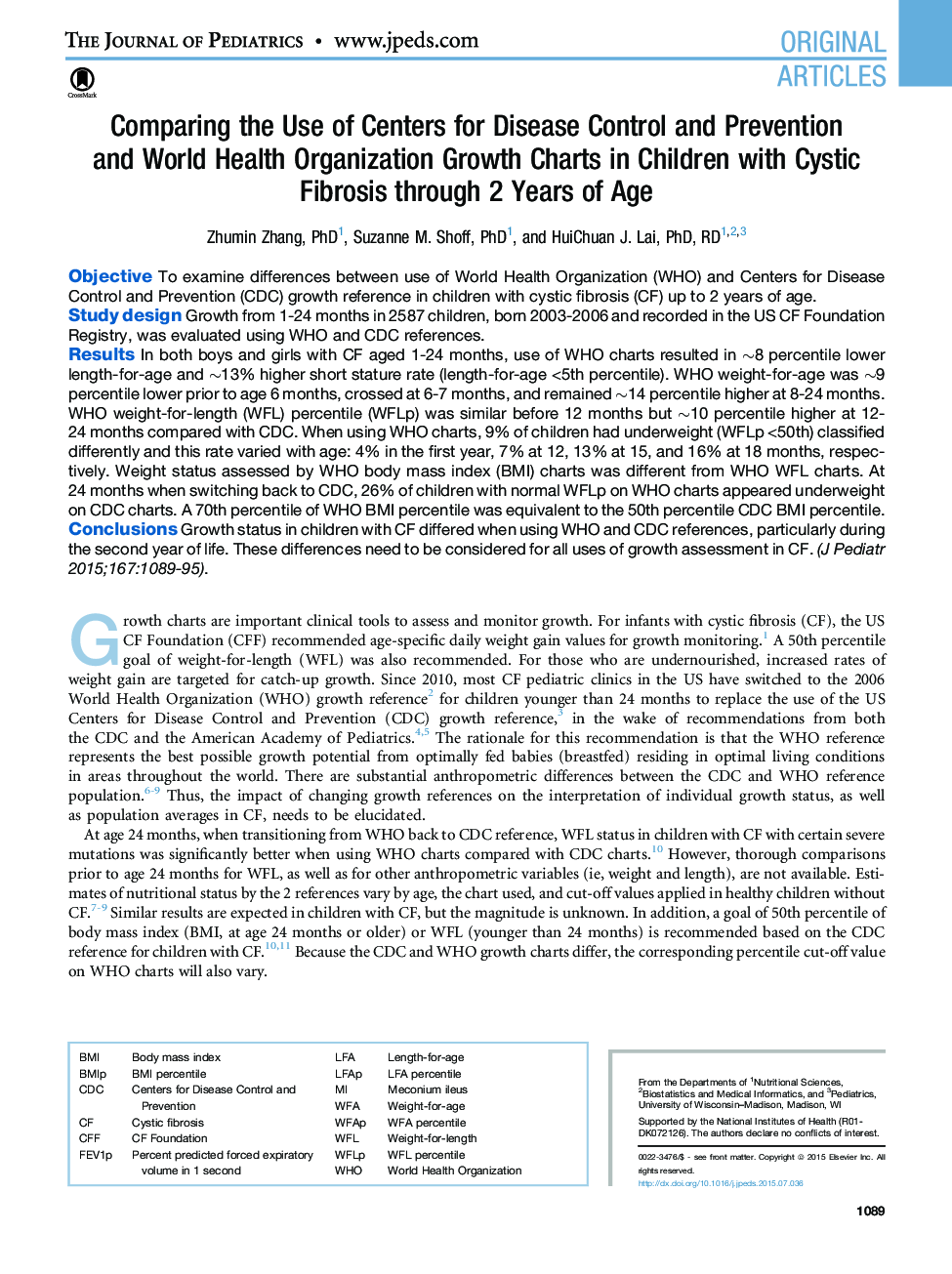| Article ID | Journal | Published Year | Pages | File Type |
|---|---|---|---|---|
| 4164729 | The Journal of Pediatrics | 2015 | 7 Pages |
ObjectiveTo examine differences between use of World Health Organization (WHO) and Centers for Disease Control and Prevention (CDC) growth reference in children with cystic fibrosis (CF) up to 2 years of age.Study designGrowth from 1-24 months in 2587 children, born 2003-2006 and recorded in the US CF Foundation Registry, was evaluated using WHO and CDC references.ResultsIn both boys and girls with CF aged 1-24 months, use of WHO charts resulted in ∼8 percentile lower length-for-age and ∼13% higher short stature rate (length-for-age <5th percentile). WHO weight-for-age was ∼9 percentile lower prior to age 6 months, crossed at 6-7 months, and remained ∼14 percentile higher at 8-24 months. WHO weight-for-length (WFL) percentile (WFLp) was similar before 12 months but ∼10 percentile higher at 12-24 months compared with CDC. When using WHO charts, 9% of children had underweight (WFLp <50th) classified differently and this rate varied with age: 4% in the first year, 7% at 12, 13% at 15, and 16% at 18 months, respectively. Weight status assessed by WHO body mass index (BMI) charts was different from WHO WFL charts. At 24 months when switching back to CDC, 26% of children with normal WFLp on WHO charts appeared underweight on CDC charts. A 70th percentile of WHO BMI percentile was equivalent to the 50th percentile CDC BMI percentile.ConclusionsGrowth status in children with CF differed when using WHO and CDC references, particularly during the second year of life. These differences need to be considered for all uses of growth assessment in CF.
